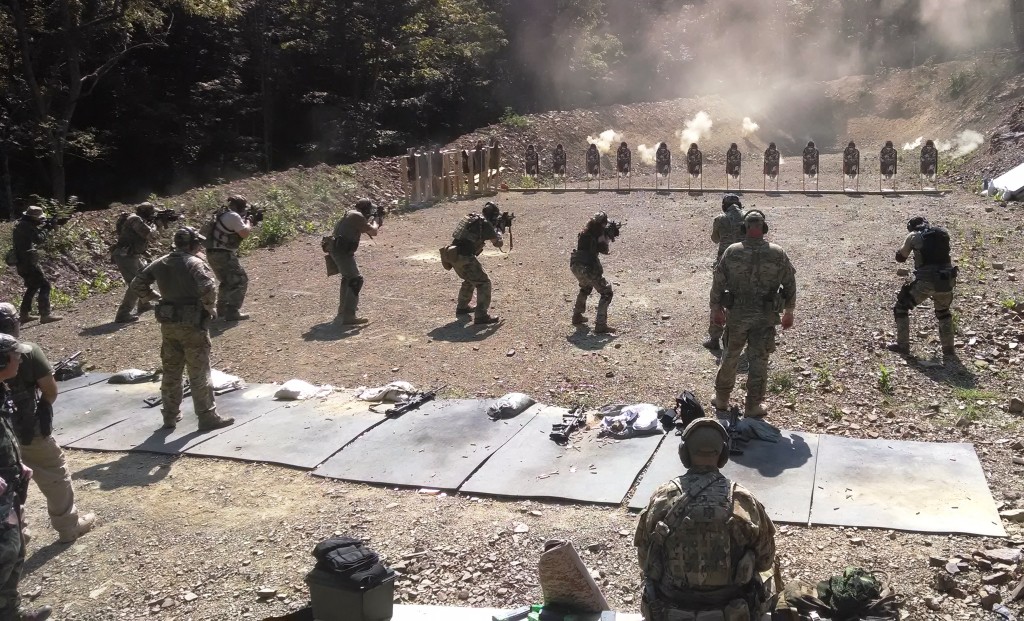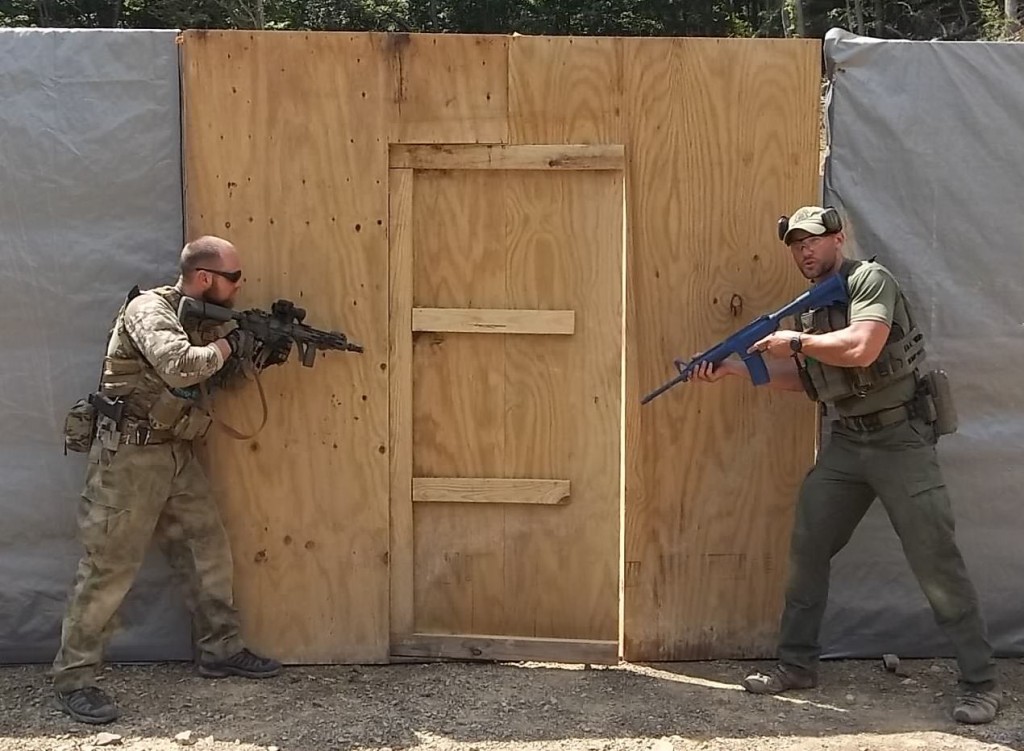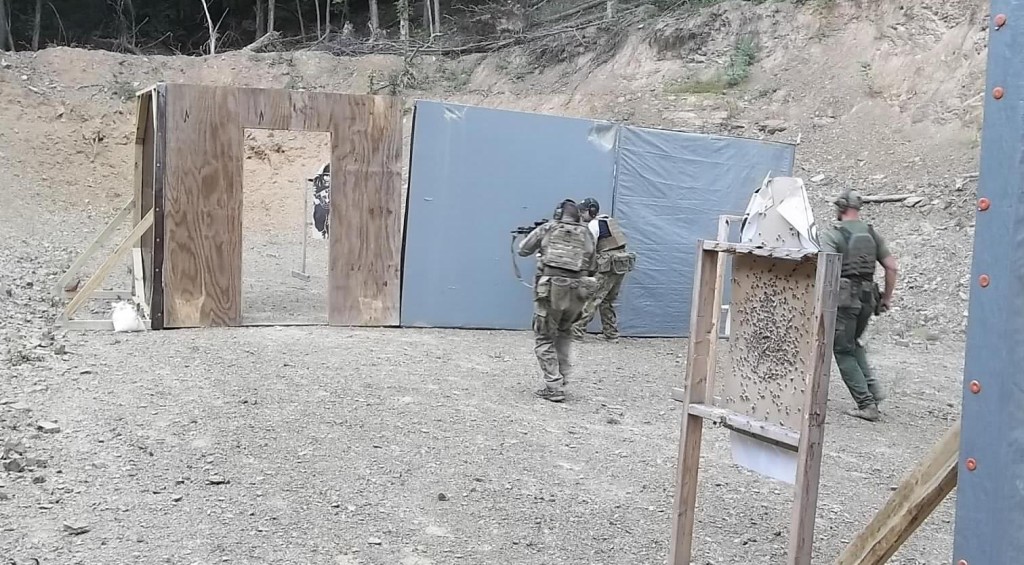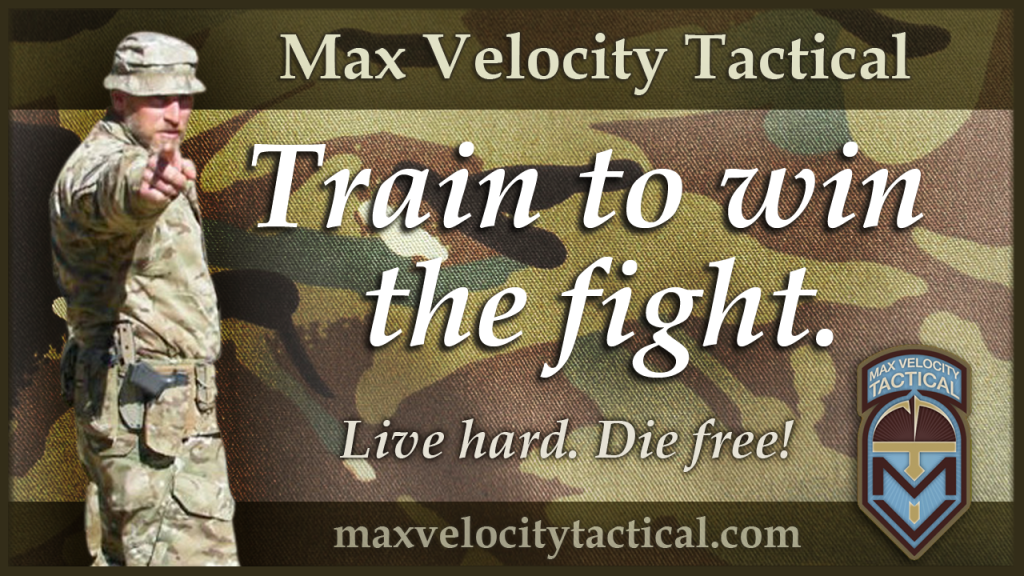MVT CADRE Comment: Scanning and Cover / Concealment: by Lee
Max sends: We ran the first Citizen Close Combat Class (C3) on August 8/9. First Sergeant and I were running Combat Team Tactics (CTT) over the hill, while Lee ran C3. Lee is the primary instructor for the C3 classes. Following the class, we had an interesting cadre chat on the Sunday evening:
What was interesting was that the C3 class had been primarily composed of MVT Alumni. This meant two things: 1) Lee was able to take the class beyond its stated intent; tailoring the class to the students is always something he will do. 2) The students were also alumni of other training schools/instructors and some interesting things came out in the course of the class. Two that stand out were:
1) Scanning: some crazy things are being taught out there. The most humorous was to stand up following an engagement, weapon up, and turn a physical 360 as a scan. Do the hokey-pokey!
2) There are (as seems to often be the case) absolutes being taught, that disregard the nuances of real combat. For example, it is being taught somewhere that you will NEVER EVER ‘hug your cover.’ Well, that works well for a single opponent, but cover is relative and cover in one direction may not be cover to another (think flanking or spread out enemy / multiple firing positions). You may use cover that is distant to you, which is between you and the threat, and/or you may use cover that you are up against. Best to stop with the absolutes. Don’t ALWAYS hug cover, and don’t ALWAYS be stood off it.
This is the subject of Lee’s post, as well as a focus on Tactical Clearance. For some basic walk-through / explanation of Tactical Clearance, you may find this post useful: ‘Tactical Clearance: An Alternative CQB Technique.‘
Lee Sends:
Scanning and Cover/Concealment:
During the inaugural Citizen Close Combat class, there were many TTP (tactics, techniques, procedures) questions raised by the students. Some of the more alarming questions stemmed from training that students received at other schools. I for one believe that every student should take as many classes as they can, and seek training from other Instructors within the tactical training community. As much training and real world combat experience that I have myself, I continually seek to expand my own knowledge base by training with other schools and instructors. Never stop learning.
That being said, there are good schools and bad schools/instructors. The differences come from varying backgrounds, training level, experience, school intent, facilities etc. etc. MVT alumni in particular have demonstrated the ability to take classes and identify the hogwash when they see it. This, for the eternal student is particularly valuable.
Cover and Concealment in buildings
Cover and concealment as applied to combat in an around structures does not change from what we know and how we utilize cover and concealment anywhere else. At the most basic level, cover is still anything that provides a physical barrier that will stop incoming rounds and concealment is still anything that keeps us from being observed. Some things are BOTH cover and concealment, but not always. Bulletproof glass for example is still cover, but it is not concealment. There is some nuance to this. That bulletproof glass suddenly becomes concealment if the enemy is using thermal. An increasing number of things become cover if the enemy is firing a handgun as opposed to a rifle, and so on and so on…
One thing that is really not nuanced at all, is that if someone is shooting at you, it is better to have something between you than not. It does not matter if it is not cover, although this is certainly preferable. Even concealment can obscure you enough that the enemy will miss. Remember we survive by inches. This is lost in the tactical community especially when it comes to clearing rooms. The way it is generally taught is to breach the door, flood the room with as many shooters as you can muster, and eliminate any threats. When available or allowed by ROE, a grenade may be tossed before flooding the room in order to disorient or kill the enemy.
The reason for flooding the room like this, is to get through the “fatal funnel” as fast as possible, and not loiter outside of the room since most interior walls do not qualify as cover, only concealment. The fear is that the enemy will return fire through the walls. The problem with the basic “breach, bang, clear” tactic is that it only works when you have total surprise, and even then is a pretty dicey proposition depending on the enemy disposition. Under the best of circumstances, you are able to take the first room in this manner, but most structures are multi-room buildings and your element of surprise is now lost for the rest of the building (in most instances). For follow on attempts at clearing rooms, once a breach is made, a “bang” is done by tossing fragmentary or concussion grenades in the room to kill or incapacitate before flooding it. For the most part, an alert and capable enemy will pour fire into your breach point the minute you make the move to flood the room. If you have run out of grenades, never had any in the first place, or the enemy is unaffected, you and your team are about to have a very bad day.
What is taught and stressed at MVT is the need to eliminate as many threats as possible, before entering the room at all. Generally speaking, this is accomplished by “fighting from the door” or other aperatures form where you can identify and eliminate threats with rifle fire. This is known as Tactical Clearance (BFF: breach, fight, flood/clear). This tactic has the following benefits over classic breach, bang, clear tactics:
– Naturally intuitive (No one wants to charge into a room full of bad guys with guns. It’s natural to want to kill them first.)
– No need for total surprise
– No need for grenades (fragmentary, concussive, or gas)Although it would be nice, and they can be incorporated if they are available.
– Non-CommitalWhat I mean is this. Once you move to flood the room, you are totally committed and do not have a choice. This is a really bad idea if there is an alert, armed, and capable enemy still left in that room. BBC (breach, bang, clear) assumes the enemy is incapacitated or otherwise unwilling or able to return fire before starting the gunfight portion. The enemy will be static, possibly under cover, while you are moving without cover fire, shooting on the move.
With tactical clearance (breach, fight, flood and clear) or fighting from the door, the “flood” portion is delayed until after you have largely, if not completely won the gun battle for that room. If the gunfight goes bad, you still have the opportunity to pull back, and are not in the room with the ballistic problem. You now have the option to continue the fight from that doorway, attack from another direction, or send someone to roll a tractor into the side of the building. You get a lot of options with tactical clearance. BBC is decisive. You are running into the room and you are going to win, or you are going to lose. That’s it.
– Lends itself to analysis and increased situational awarenessDuring the pieing or “fight” portion of tactical clearance you get a look at room layout before entering. While looking for threats to eliminate, you will be noticing doors, hallways, other rooms etc, before entering the room. This is a huge tactical benefit. If it’s your own house and you already know the layout, it may be nice to notice your daughter hiding under the table before you charge in guns blazing…
– Accurate shootingMost of the shooting done in Tactical Clearance is done from a static position. Most of the shooting done in BBC is done on the move while flooding the room. Remember that height over bore stuff? Super useful now right?
– Small Unit Tactics friendlyBBC requires a large amount of personnel to be effective, and is best used with multiple teams at separate breach points using up a ton of grenades. If you are one team or an individual, you are just not going to get the multiple breach points and amount of grenades necessary to clear an entire building using BBC. Tactical Clearance can be utilized effectively by one team, or even an individual if necessary.
But Lee! That doesn’t work! Those walls you’re fighting from don’t stop bullets! The enemy will just shoot back at you through the walls. It has to be a bulletproof wall to work.
A wall that would stop incoming rounds is definitely preferable, but not required. Tactical Clearance if done properly allows you the freedom of movement to physically get out of the way of return fire by moving down the wall. Nothing can be done if the first round that comes your way gets you. That’s any gunfight. But if it doesn’t, you have the opportunity to move down the wall and out of the line of fire. This is very nuanced and can only adequately be conveyed through training. But once you have moved away from the aperature (doorway, window, hole in the wall etc..) all the enemies shots are now complete guesswork. He cannot aim at you since you have that wall as concealment, perhaps you went as far as the next room. Point is, the enemy does not know your position. He can only fire in your “general” direction, and anyone who has climbed a mountain occupied by Ivan at the Velocity Training Center knows how well “firing in a general direction” works out for you. You aren’t going to hit anything except through dumb luck.
Scanning
Wow. I mean, wow is there some shockingly terrible training going on out there on how to scan. There are two types of scanning that we concern ourselves with as warriors.
Firstly there is passive scanning. This is constant before a gunfight breaks out. You are observing your environment, taking in and analyzing information. Your looking for enemy, hand and arm signals from your teammates, pretty flowers, tinder for tonight’s fire, and so on. Passive scanning should be a normal, constant part of your everyday life. Some people grow up so oblivious to their surroundings that it can be argued that when they scan it is not passive at all, but I digress. Most people don’t need to be taught how to conduct passive scanning, they just need to be reminded TO DO IT AT ALL because we just forget to do normal things when we pick up a rifle and get excited.
Then, there is active scanning. This is a conscious, intentional act that is done as an automatic action after a threat is neutralized.
I am fully aware of the cussing policy at MVT. But sometimes there is only one way to adequately convey the seriousness of the stupid that is out there. The tactical training community has gone f*cking insane with overcomplicating active scanning and endangering the student that implements some of these terrible scanning TTPs. Here are some glaring examples of the stupid that is being taught out there…
- Don’t train yourself to throw your elbows around during a scan. This is pointless. If some knucklehead is in panic and gets to close to you during a mall shooting, then elbow him, push off and gain distance. It is wasted pointless effort 99.9% of the time swinging your elbows pointlessly into the air. Chances are that if a crowd gets panic stricken during a gunfight, they are not going to be running towards anyone with a gun, including you the “good guy”.
- Do not walk backwards to a wall and put your back into it. We do not backpedal or walk backwards into cover during gunfights. The myriad of reasons why you need to be looking where your going should be obvious.
- Do NOT. I REPEAT, DO NOT train to scan by physically turning your body completely around. Imagine, you and your team make contact, get online and eliminate the immediate threat. Then everyone starts their scan. Everyone does the hokey-pokey and turn themselves around, and everyone has their back to the direction of their area of responsibility. This, is obviously a stupid thing to do. Unless you take turns scanning (which is pointless as well) this is complete tactical retardation. Keep your body oriented towards your sector of responsibility.
- DON’T break good cover to scan.
When you scan drop the weapon out of your line of sight. This means get your face off the rifle. Scan high and low 360 degrees by moving your head and shoulders, but keep your body oriented in the direction of your sector of responsibility. Don’t screw your whole team by turning your back on your sector! When we scan we are looking for the following things prioritized in this order:
1) Identify the positions and conditions of our teammates.
2) Identify new threats.
3) Verify the condition of “neutralized” known threats.
4) Analyze the environment/terrain. Things may look a lot different since your last scan if it was a drawn out firefight where you moved a lot. Analyze where the next threats are likely to present themselves, positions of cover, and avenues of escape or approach.
We have to remember where a lot of this is coming from. There are a lot of “Instructors” out there that have no real world experience when it comes to combat of any kind, much less a gunfight. There is an interest on their part to over-complicate subject matter since they lack the expertise to understand the nuances and convey that to their students. Plus, they want to be seen as the innovator that came out with the next new way to tac reload, or scan or whatever. I’m all for new and improved techniques, but not to just fill the air with noise. Keep it simple, intuitive, and most importantly effective.
Stay dangerous my friends. See you on the range.
~Lee
You may also find this post useful, related to the scanning topic: ‘Buddy Position Awareness‘
The next C3 class is in September:




